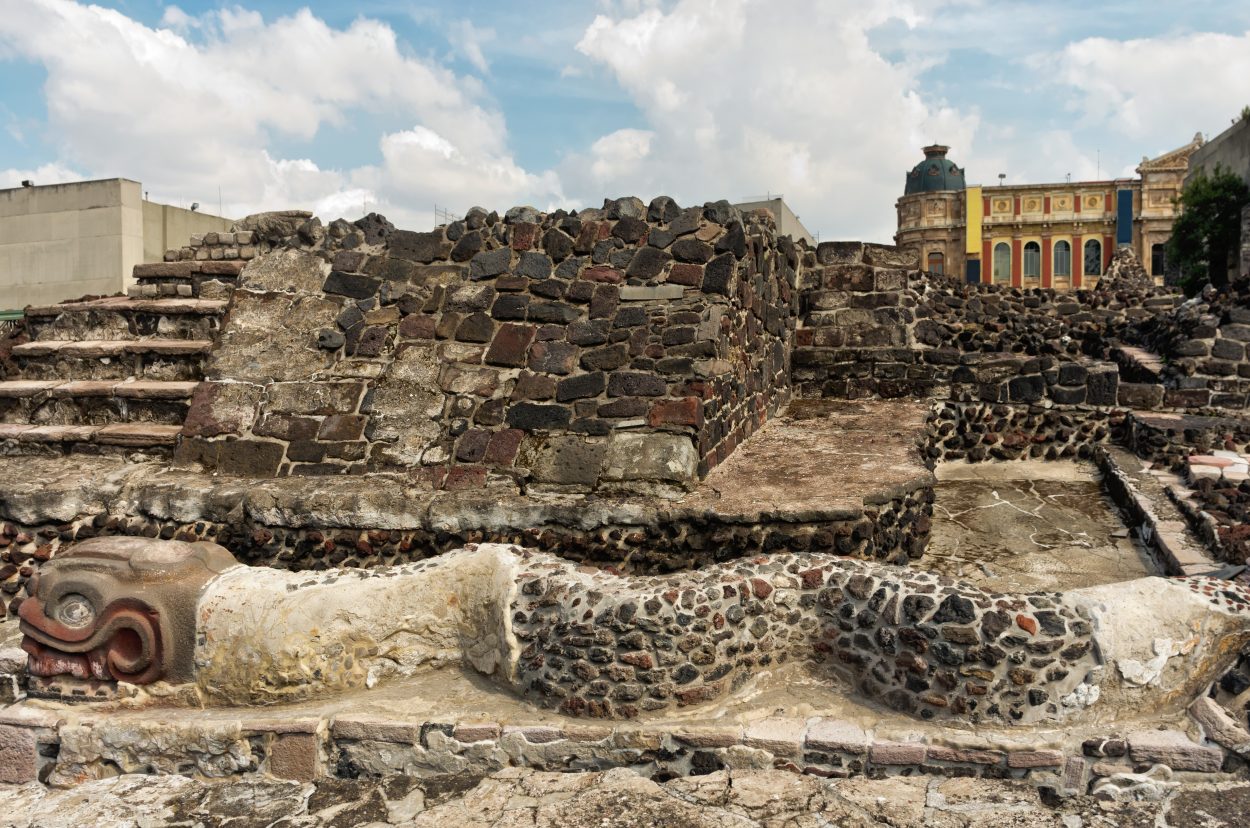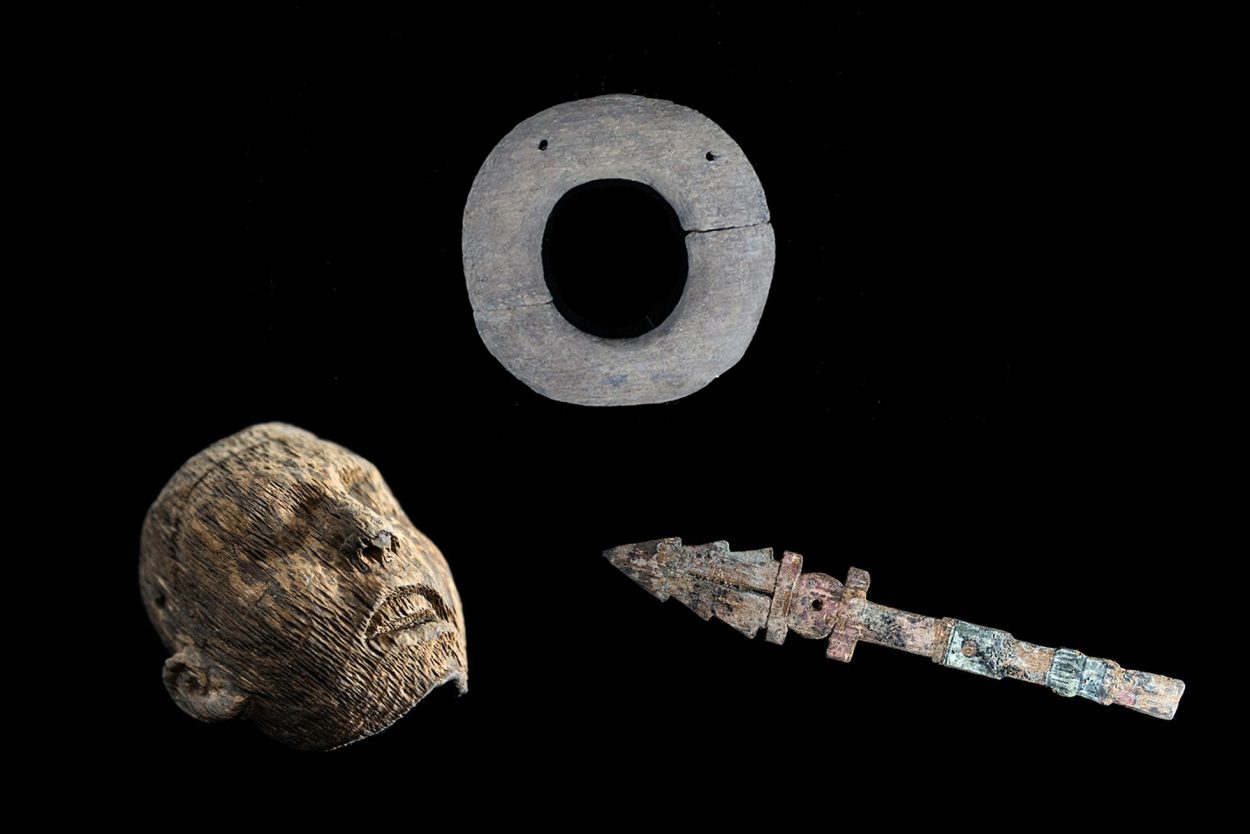Archaeologists have recovered thousands of wooden objects from the Templo Mayor in the Aztec city of Tenochtitlan in Mexico City.
The Templo Mayor was the heart of a complex consisting of two temples, five platforms and subsidiary buildings from the capital of the pre-Hispanic Aztec Empire. The temple was called the huey teocalli in the Nahuatl language and was dedicated simultaneously to two gods: Huitzilopochtli, god of war, and Tlaloc, god of rain and agriculture.
Construction of the temple began sometime after 1325 but was destroyed by the Spanish in 1521. The present-day archaeological site lies to the northeast of the Zocalo, or main plaza of Mexico City, on the corner of what is now the streets of Seminario and Justo Sierra.

Archaeologists from the Instituto Nacional de Antropología Historia (INAH) have conducted excavations at the foot of the temple where they discovered ritual deposits containing over 2,500 wooden objects.
The finds consist of masks, headdresses, sceptres, pectorals, darts, figurines, dart launchers, earrings, jars, and numerous wooden offerings that the priests deposited to consecrate the site to the Aztec gods.
The objects have survived due to the anaerobic conditions in the soil and the high level of humidity that has persevered them for more than 500 years. The researchers applied modern methods of conservation in which the finds were stabilised using synthetic sugars (lactitol and, later, trehalose) which prevents the breakdown of the wood by microorganisms and fluctuations in relative humidity.

The finds are then rinsed in water and placed inside a heat chamber with temperatures of 50°C. This slowly dries the wood and allows the controlled crystallisation of sugars that generates a thickening of the cell walls at a microscopic level.
Most of the wooden objects come from different species of pine, whilst white cedar, cypress, tepozán and ahuehuete has also been identified, many of which still have traces of polychromy colours such as blue, red, black, and white pigment on the surface.
Excavations of the ritual deposits have also uncovered botanical remains such as flowers, birds, mammals and marine animals, sea cucumbers, copper and gold objects, and flint and ceramic pieces.
Header Image Credit : Mirsa Orozco – INAH





